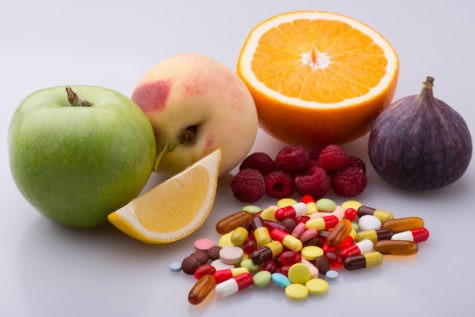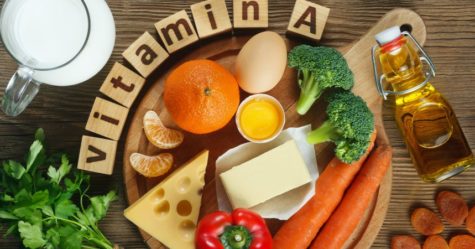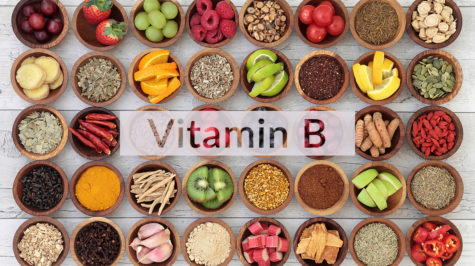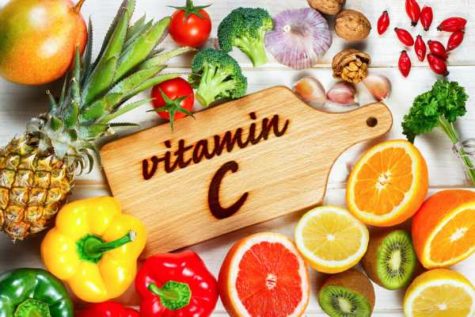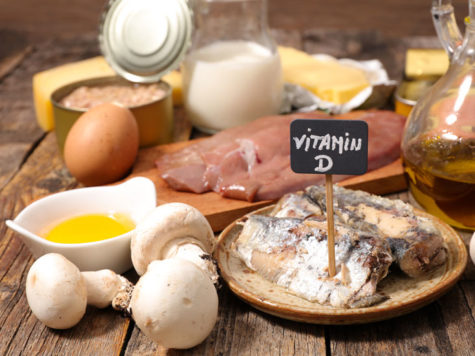Vitamins
The Importance of Minerals
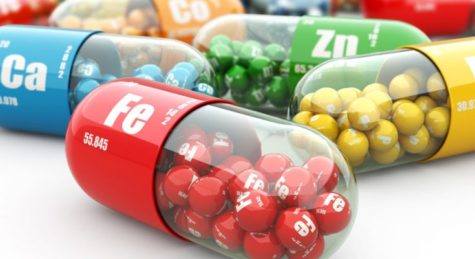
The term ‘ minerals ‘ refers to elements in their simple inorganic form. In nutrition they are commonly referred to as mineral elements or inorganic nutrients. Minerals are vital to health. Like vitamins and amino acids, minerals are essential for regulating and building the trillions of living cells which make up the body. Body cells receive the essential food elements through the blood stream. They must, therefore, be properly nourished with an adequate supply of all the essential minerals for the efficient functioning of the body.
Minerals help maintain the volume of water necessary to life processes in the body. They help draw chemical substances into and out of the cells and they keep the blood and tissue fluid from becoming either too acidic or too alkaline.
The importance of minerals, like vitamins, is illustrated by the fact that there are over 50,000 enzymes in the body which direct growth and energy and each enzyme has minerals and vitamins associated with it. Each of the essential food minerals does a specific job in the body and some of them do extra work, in teams, to keep body cells healthy.
The mineral elements which are needed by the body in substantial amounts are calcium, phosphorous, iron, sulfur, magnesium, sodium, potassium and chlorine. In addition the body needs minute (trace) amounts of iodine, copper, cobalt, manganese, zinc, selenium, silicon, fluorine and some others.
-
Calcium
The human body needs calcium more than any other mineral. A man weighing 70 kg. contains one kg. of calcium. About 99 per cent of the quantity in the body is used for building strong bones and teeth and the remaining one per cent is used by the blood, muscles and nerves.
Calcium performs many important functions. Without this mineral , the contractions of the heart would be faulty, the muscles would not contract properly to make the limbs move and blood would not clot. Calcium stimulates enzymes in the digestive process and coordinates the functions of all other minerals in the body.
Calcium is found in milk and milk products, whole wheat, leafy vegetables such as lettuce, spinach, and cabbage , carrots, watercress, oranges, lemons, almonds, figs and walnuts. A daily intake of about 0.4 to 0.6 grams of calcium is considered desirable for an adult. The requirement is larger for growing children and pregnant and lactating women.
Deficiency may cause porous and fragile bones, tooth decay, heart palpitations, muscle cramps, insomnia and irritability. A large increase in the dietary supply of calcium is needed in tetany and when the bones are decalcified due to poor calcium absorption, as in rickets, oesteomalacia and the mal-absorption syndrome. Liberal quantity of calcium is also necessary when excessive calcium has been lost from the body as in hyperparathyroidism or chronic renal disease.
-
Phosphorus
It combines with calcium to create the calcium-phorphorus balance necessary for the growth of bones and teeth and in the formation of nerve cells. This mineral is also essential for the assimilation of carbohydrates and fats. It is a stimulant to the nerves and brain. Phosphorous is found in abundance in cereals, pulses, nuts, egg yolk, fruit juices, milk and legumes. Usually about one gram of phosphorous is considered necessary in the daily diet.
A phosphorous deficiency may bring about loss of weight, retarded growth, reduced sexual powers and general weakness. It may result in poor mineralization of bones, deficient nerve and brain function.
While taking calcium in therapeutic doses for calcium deficiency conditions or for treating ailments, it is advisable to take the calcium supplement in which phosphorous has been added in the correct proportions. This is necessary as calcium cannot achieve its objectives unless phosphorous is present in a proper balance.
-
Iron
Iron is an important mineral which enters into the vital activity of the blood and glands. Iron exists chiefly as hemoglobin in the blood. It distributes the oxygen inhaled into the lungs to all the cells. It is the master mineral which creates warms, vitality and stamina. It is required for the healthy complexion and for building up resistance in the body.
The chief sources of iron are grapes, raisins, spinach, all green vegetables, whole grain, cereals, dried beans, dark colored fruits, beets, dates, liver and egg yolk. The Indian Council of Medical Research has recommended an allowance of 20 to 30 mg. of iron in a balanced diet for an adult.
Iron deficiency is generally caused by severe blood loss,malnutrition , infections and by excessive use of drugs and chemicals. Deficiency of dietary iron may cause nutritional-anemia, lowered resistance to disease, a general run down condition, pale complexion, shortness of breath on manual exertion and loss of interest in sex.
Iron is the classic remedy for anemia. However, there are several forms of anemia, and iron deficiency anemia is only one. If one is taking iron pills due to insufficient intake of iron in the normal diet, one should also take at least 40 mg. of folic acid or folate every day, along with 10 to 25 mg. of vitamin B12. Both these vitamins are essential in building healthy blood cells.
-
Sulphur
All living matter contains some sulphur; this element is therefore essential for life. The greater part of the sulphur in the human body is present in the two sulphur-containing amino acids, methionine and cysteine, or in the double form of the latter cystine.
The main purpose of sulphur is to dissolve waste materials. It helps to eject some of the waste and poisons from the system. It helps keep the skin clear of blemishes and makes hair glossy. It is also valuable in rheumatic conditions.
The main sulphur-containing foods are radishes, carrots, cabbage, cheese, dried beans, fish and eggs. There is no recommended dietary allowance. But a diet sufficient in protein will generally be adequate in sulphur.
Deficiency of sulphur may cause eczema and imperfect development of hair and nails. Sulphur creams and ointments have been remarkably successful in treating a variety of skin problems.
-
Magnesium
All human tissues contain small amounts of magnesium. The adult human body contains about 25 gms. of this mineral. The greater part of this amount is present in bones in combination with phosphate and carbonate. Bone ashes contain less than one per cent magnesium. About one-fifty of the total magnesium in the body is present in the soft tissues, where it is mainly bound to protein.
Next to potassium, magnesium is the predominant metallic action in living cells. The bones seem to provide a reserve supply of this mineral in case of shortage elsewhere in the body. Biochemists call magnesium the “cool, alkaline, refreshing, sleep-promoting mineral”. Magnesium helps one keep calm and cool during the sweltering summer months. It aids in keeping nerves relaxed and normally balanced. It is necessary for all muscular activity.
This mineral is in activator for most of the enzyme system involving carbohydrate, fat and protein in energy-producing reactions. It is involved in the production of lecithin which prevents building up of cholesterol and consequent atherosclerosis. Magnesium promotes a healthier cardiovascular system and aids in fighting depression. It helps prevent calcium deposits in kidneys and gallstones and also brings relief from indigestion.
Magnesium is widely distributed in foods. It is a part of the chlorophyll in green vegetables. Other good sources of this mineral are nuts, soy beans, alfalfa, apples, figs, lemons, peaches, almonds, whole grains, brown rice, sunflower seeds and sesame seeds.
The recommended dietary allowances for magnesium are 350 mg. per day for adult man, 300 mg. for women and 450 mg. during pregnancy and lactation.
Deficiency can lead to kidney damage and kidney stones, muscle cramps, arteriosclerosis, heart attack, epileptic seizures, nervous irritability, marked depression and confusion, impaired protein metabolism and premature wrinkles. Chronic alcoholics often show a low plasma magnesium concentration and a high urinary output. They may, therefore, require magnesium therapy especially in an acute attack of delirium tremens.
Magnesium has also proved useful in bladder and urinary problems and in epileptic seizure. This mineral together with vitamin B6 or pyridoxine has also been found effective in the prevention and treatment of kidney stones. Magnesium can be taken in therapeutic doses up to 700 mg. a day.
-
Sodium
Sodium Chloride , the chemical name for common salt, contains 39 per cent of sodium, an element which never occurs in free form in nature. It is found in an associated form with many minerals especially in plentiful amounts with chlorine. The body of a healthy person weighing about 65 kg. contains 256 g. of sodium chloride. Of this the major part, just over half, is in the extra-cellular fluid. About 96 g. is in bone and less than 32 g. in the cells.
Sodium is the most abundant chemical in the extra-cellular fluid of the body. It acts with other electrolytes, especially potassium, in the intracellular fluid, to regulate the osmotic pressure and maintain a proper water balance within the body. It is a major factor in maintaining acid-base equilibrium, in transmitting nerve impulses, and in relaxing muscles. It is also required for glucose absorption and for the transport of other nutrients across cell membranes.
Sodium can help prevent catarrh. It promotes a clear brain, resulting in a better disposition and less mental fatigue. Because of its influence on calcium, sodium can also help dissolve any stones forming within the body. It is also essential for the production of hydrochloric acid in the stomach and plays a part in many other glandular secretions.
There is some natural salt in every food we eat. Vegetable foods rich in sodium are celery, cucumbers, watermelon, lemons, oranges, grapefruit, beet-tops, cabbage, lettuce, corn, lady’s fingers, apple, berries, pears, squash, pumpkin, peaches, lentils, almonds and walnuts. Animal food sources include shell fish, lean beef, kidney, bacon and cheese.
The sodium chloride requirements for persons living in the tropics have been estimated at 10 to 15 g. per day for adults who are engaged in light work and 15 to 20 g. for those engaged in hard work. The requirements of children are from five to 10 g. and those for adolescent boys and girls from 10 to 25 g.
Both deficiency and excess of salt may produce adverse effects o the human body. Deficiencies of sodium are, however, rare and may be caused by excessive sweating, prolonged use of diuretics, or chronic diarrhea. Deficiency may lead to nausea, muscular weakness, heat exhaustion, mental apathy and respiratory failure.
Over-supply of sodium is a more common problem because of overuse of dietary sodium chloride or common salt. Too much sodium may lead to water retention, high blood pressure, stomach ulcers, stomach cancer, hardening of arteries and heart disease.
In case of mild deficiency of sodium chloride, taking a teaspoon of common salt in one half liter of water or any fruit juice quickly restores the health. In severe conditions, however, administration of sodium chloride in the form of normal saline by intravenous drip may be restored to.
The adverse effects of excessive use of sodium chloride can be rectified by avoiding the use of common salt.
-
Potassium
Potassium is essential to the life of every cell of a living being and is among the most generously and widely distributed of all the tissue minerals. It is found principally in the intracellular fluid where it plays an important role as a catalyst in energy metabolism and in the synthesis of glycogen and protein. The average adult human body contains 120 g. as potassium and 245 g. as potassium chloride. Out of this body potassium, 117 g. is found in the cells and 3 g. in the extracellular compartment.
Potassium is important as an alkalizing agent in keeping a proper acid-alkaline balance in the blood and tissues. It is essential for muscle contraction and therefore, important for proper heart function. It promotes the secretion of hormones and helps the kidneys in detoxification of blood. Potassium prevents female disorders by stimulating the endocrine hormone production. It is involved in the proper functioning of the nervous system and helps overcome fatigue. It also aids in clear thinking by sending oxygen to the brain and assists in reducing blood pressure.
Potassium is widely distributed in foods. All vegetables, especially green, leafy vegetables, grapes, oranges, lemons, raisins, whole grains, lentils, sunflower seeds, nuts, milk, cottage cheese and butter milk are rich sources. Potatoes, especial potato peelings, and bananas are especially good sources. Potassium requirements have not been established but on intake of 0.8 to 1.3 g. per day is estimated as approximately the minimum need.
Potassium deficiency may occur during gastrointestinal disturbances with severe vomiting and diarrhea, diabetic acidosis and potassium-losing nephritis. It causes undue nervous and body tiredness, palpitation of the heart, cloudiness of the mind, nervous shaking of the hands and feet, great sensitivity of the nerves to cold, and excessive perspiration of the feet and hands.
In simple cases of potassium deficiency, drinking plenty of tender coconut water daily, can make up for it. It is advisable to consume plenty of figs, apricots, prunes, almonds and tomatoes during the use of oral diuretics. Potassium-rich foods should be restricted during acute renal failure and Addison’s disease.
-
Chlorine
In the human body, chlorine is liberated by the interaction of common salt, taken along with food, and hydrochloric acid liberated in the stomach during the process of digestion. It is essential for the proper distribution of carbon dixoxide and the maintenance of osmotic pressure in the tissues.
This food element is necessary for the manufacture of glandular hormone secretions. It prevents the building of excessive fat and auto-intoxication. Chlorine regulates the blood’s alkaline -acid balance and works with Potassium in a compound form. It aids in the cleaning out of body waste by helping the liver to function.
Chlorine is found in cheese and other milk products, green leafy vegetables, tomatoes, all berries, rice, radishes, lentils, coconuts and egg yolk. No dietary allowance has been established, but an average intake of daily salt will ensure adequate quantity of chlorine. Deficiency of this mineral can cause loss of hair and teeth.
-
Iodine
The chief store-house of iodine in the body is the thyroid gland. The essential thyroxine, which is secreted by this gland, is made by the circulating iodine. Thyroxine is a wonder chemical which controls the basic metabolism and oxygen consumption of tissues. It increases the heart rate as well as urinary calcium excretion. Iodine regulates the rate of energy production and body weight and promotes proper growth. It improves mental alacrity and promotes healthy hair, nails, skin and teeth.
The best dietary sources of iodine are kelp and other seaweeds. Other good sources are turnip greens, garlic, watercress, pineapples, pears, artichokes, citrus fruits, egg yolk and seafood and fish liver oils.
The recommended dietary allowances are 130 mcg. per day for adult males and 100 mcg. per day for adult females. An increase to 125 mcg. per day during pregnancy and to 150 mcg. per day during lactation has been recommended.
Deficiency can cause goiter and enlargement of the thyroid glands. Small doses of iodine are of great value in the prevention of goiter in areas where it is endemic and are of value in treatments, at least in the early stages. Larger doses have a temporary value in the preparation of patients with hyperthyroidism for surgical operation.
-
Copper
There are approximately 75 to 150 mg. of copper in the adult human body. Newborn infants have higher concentrations than adults. Liver, brain, kidney, heart, and hair contain relatively high concentration. Average serum copper levels are higher in adult females than in males. Serum copper levels also increase significantly in women both during pregnancy and when taking oral contraceptives.
This mineral helps in the conversion of iron into hemoglobin. It stimulates the growth of red blood cells. It is also an integral part of certain digestive enzymes. It makes the amino acid tyrosine usable, enabling it to work as the pigmenting factor for hair and skin. It is also essential for the utilization of vitamin C.
Copper is found in most foods containing iron, especially in almonds, dried beans, peas, lentils, whole wheat, prunes and egg yolk. The recommended dietary allowance has not been established but 2 mg. is considered adequate for adults. A copper deficiency may result in bodily weakness, digestive disturbances and impaired respiration.
-
Cobalt
Cobalt is a component of vitamin B12, a nutritional factor necessary for the formation of red blood cells. Recent research in vitamin B12 has shown that its pink color is attributed to the presence of cobalt in it. The presence of this mineral in foods helps the synthesis of hemoglobin and the absorption of food- iron.
The best dietary sources of cobalt are meat, kidney and liver. All green leafy vegetables contain some amount of this mineral. No daily allowance has been set. Only a very small amount up to 8 mcg. is considered necessary.
-
Manganese
The human body contains 30 to 35 mg. of manganese, widely distributed throughout the tissues. It is found in the liver , pancreas, kidney, pituitary glands. This mineral helps nourish the nerves and brain and aids in the coordination of nerve impulses and muscular actions. It helps eliminate fatigue and reduces nervous irritability.
Manganese is found in citrus fruits, the outer covering of nuts, grains, in the green leaves of edible plants, fish and raw egg yolk. No official daily allowance of manganese has been established, but 2.5 to 7 mg. is generally accepted to be the average adult requirement. A deficiency of this mineral can lead to dizziness, poor elasticity in the muscles, confused thinking and poor memory.
-
Zinc
There are about two grams of zinc in the body where it is highly concentrated in the hair, skin, eyes, nails and testes. It is a constituent of many enzymes involved in metabolism. Zinc is a precious mineral.
Our need for this mineral is small but its role in growth and well-being is enormous, starting before birth. It is needed for healthy skin and hair, proper healing of wounds, successful pregnancies and male virility. It plays a vital role in guarding against diseases and infection. It is needed to transport vitamin A to the retina. There are 156 enzymes that require zinc for their functioning. It has long been known that growth and sexual maturity depend on zinc.
The main dietary sources of zinc are milk, liver, beans, meat, whole grains, nuts, and seeds. The recommended dietary allowance of zinc is 15 mg. daily.
Deficiency can result in weight loss, skin diseases, loss of hair, poor appetite, diarrhea and frequent infection. Those suffering from rheumatoid arthritis may have a zinc deficiency. Heavy drinkers lose a lot of zinc in their urine.
-
Selenium
Selenium and vitamin E are synergistic and the two together are stronger than the sum of the equal parts. Selenium slows down ageing and hardening of tissues through oxidation. Males seem to have a greater need for this mineral. Nearly half of the total supply in the body is concentrated in the testicles and in the seminal ducts adjacent to the prostate gland.
Selenium is useful in keeping youthful elasticity in tissues. It alleviates hot flushes and menopausal distress. It also helps in the prevention and treatment of dandruff.
This mineral is found in Brewer’s yeast, garlic, onions, tomatoes, eggs, milk and sea food. There is no official dietary allowance for selenium but, 50 to 100 mcg. is considered adequate. Deficiency of this mineral can cause premature loss of stamina.
-
Silicon
This is known as the ” beauty mineral ” as it is essential for the growth of skin, hair shafts, nails and other outer coverings of the body. It also makes the eyes bright and assists in hardening the enamel of the teeth. It is beneficial in all healing process and protects body against many diseases such as tuberculosis, irritations in mucous membranes and skin disorders.
Silicon is found in apples, cherries, grapes, asparagus, beets, onions, almonds, honey, peanuts and the juices of the green leaves of most other vegetables. No official dietary allowance has been established for this mineral.
Deficiency can lead to soft brittle nails, ageing symptoms of skin such as wrinkles, thinning or loss of hair, poor bone development, insomnia, osteoporosis.
-
Flourine
Fluorine is the element that prevents diseases from decaying the body. It is a germicide, and acts as an antidote to poison, sickness and disease. There is a strong affinity between calcium and fluorine. These two elements, when combined, work particularly in the outer parts of bones. They are found in the enamel of the teeth and the shiny, highly polished bone surface.
Fluorine is found in goat’s milk, cauliflower, watercress, garlic, beets, cabbage, spinach and pistachio nuts.
Minerals Are Important
Minerals thus play an important role in every bodily function and are present in every human cell. Although the amount needed may be small, without even the trace of the mineral, dysfunction is bound to occur at some level in the body. A zinc deficiency may show up in ridged fingernails with white spots. Lack of sulfur can cause lack-luster hair and dull-looking skin. Less obvious deficiencies may surface as fatigue, irritability, loss of memory, nervousness, depression and weakness.
Minerals also interact with vitamins. Magnesium, for instance, must be present in the body for utilization of B-complex, C and E vitamins. Sulfur also works with the B-complex vitamins. The body needs all the trace minerals in proper balance.
Coffee, tea, alcohol, excess salt and many drugs can rob the body of minerals or make them ineffective. Industrial pollutants cause toxic minerals to enter the body. Minerals at toxic levels also have the effect of destroying the usefulness of other vitamins and minerals.
Exercise improves the activity of certain vitamins and minerals while stress and fatigue work against them. A well-balanced diet provides as abundance of minerals and vitamins. In refining cereals, grains and sugar, we have robbed them of their natural vitamins and minerals.
The dietary sources of these nutrients are whole grains, cereals, bran and germ. It is the bran and germ which are removed in processing. To obtain a balance of nutrients, it is, therefore, necessary to avoid refined and processed foods but an intake of adequate green leafy vegetables which are an excellent source of many nutrients should be ensured.
The Importance of Vitamins
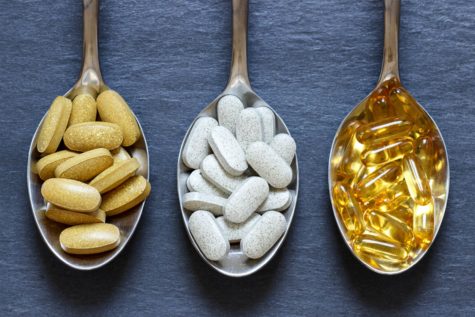
The word ‘ Vitamine’ meaning a vital amine was proposed by a Polish Researcher, Dr. Cacimir Funk, in 1911 to designate a new food substance which cured beri-beri. Other terms were proposed as new factors were discovered. But the word vitamin , with the final ‘e’ dropped, met with popular favor.
Vitamins are potent organic compounds which are found in small concentrations in foods. They perform specific and vital functions in the body chemistry. They are like electric sparks which help to run human motors. Except for a few exceptions, they cannot be manufactured or synthesized by the organism and their absence or improper absorption results in specific deficiency disease.
It is not possible to sustain life without all the essential vitamins. In their natural state they are found in minute quantities in organic foods. We must obtain them from these foods or in dietary supplements.
Vitamins, which are of several kinds, differ from each other in physiological function, in chemical structure and in their distribution in food. They are broadly divided into two categories, namely, fat-soluble and water-soluble.
Vitamins A, D, E and K are all soluble in fat and fat solvents and are therefore, known as fat-soluble. They are not easily lost by ordinary cooking methods and they can be stored in the body to some extent, mostly in the liver. They are measured in international units.
Vitamin B Complex and C are water soluble. They are dissolved easily in cooking water. A portion of these vitamins may actually be destroyed by heating. They cannot be stored in body and hence they have to be taken daily in foods. Any extra quantity taken in any one day is eliminated as waste. Their values are given in milligrams and micrograms, whichever is appropriate.
Vitamins, used therapeutically, can be of immense help in fighting disease and speeding recovery. They can be used in two ways, namely, correcting deficiencies and treating disease in place of drugs. Latest researches indicate that many vitamins taken in large doses far above the actual nutritional needs, can have a miraculous healing effect in a wide range of common complaints and illnesses.
Vitamin therapy has a distinct advantage over drug therapy. While drugs are always toxic and have many undesirable side effects, vitamins , as a rule are non-toxic and safe. The various functions of common vitamins, their deficiency symptoms, natural sources, daily requirements and their therapeutic uses are discussed in brief as follows:
Vitamin A
Known as anti-opathalmic, vitamin A is essential for growth and vitality. It builds up resistance to respiratory and other infections and works mainly on the eyes, lungs, stomach and intestines. It prevents eye diseases and plays a vital role in nourishing the skin and hair. It helps to prevent premature ageing and senility, increases life expectancy and extends youthfulness.
The main sources of this vitamin are fish liver oil, liver, whole milk, curds, pure ghee, butter, cheese, cream and egg yolk, green leafy and certain yellow root vegetables such as spinach, lettuce, turnip, beets, carrot, cabbage and tomato and ripe fruits such as prunes, mangoes, papaya, apricots, peaches, almonds and other dry fruits.
A prolonged deficiency of vitamin A may result in inflammation of the eyes, poor vision frequent colds, night blindness and increased susceptibility to infections, lack of appetite and vigor, defective teeth and gums and skin disorders.
The recommended daily allowance of vitamin A is 5,000 international units for adults and 2,600 to 4,000 international units for children. When taken in large therapeutic doses, which are usually 25,000 to 50,000 units a day, it is highly beneficial in the treatment of head and chest colds, sinus trouble, influenza and other infectious diseases. It is also valuable in curing night blindness and other eye diseases as well as many stubborn skin disorders.
This vitamin can be given up to 1,00,000 units a day for a limited period of four weeks under doctor’s supervision. In a recent year-long study, huge doses of vitamin A given twice a year reduced death by about 30 per cent among Indonesian children. This has raised the hope in the fight against a significant cause of childhood mortality in developing countries.
B Complex Vitamins
There are a large variety of vitamins in the B group, the more important being B1 or thiamine, B2 or riboflavin, B3 or niacin or nicotinic acid, B6 or pyridoxine, B9 or folic acid, B12 and B5 or pantothenic acid. B vitamins are synergistic. They are more potent together than when used separately.
- Thiamine
Known as anti-beberi, anti-neuritic and anti-ageing vitamin, thiamine plays an important role in the normal functioning of the nervous system, the regulation of carbohydrates and good digestion. It protects heart muscle, stimulates brain action and helps prevent constipation. It has a mild diuretic effect.
Valuable sources of this vitamin are wheat germ, yeast, the outer layer of whole grains, cereals, pulses, nuts, peas, legumes, dark green leafy vegetables, milk, egg,banana and apple.
The deficiency of thiamine can cause serious impairment of the digestive system and chronic constipation, loss of weight, diabetes, mental depression, nervous exhaustion and weakness of the heart.
The recommended daily allowance for this vitamin is about two milligrams for adults and 1.2 mg. for children. The need for this vitamin increases during illness, stress and surgery as well as during pregnancy and lactation. When taken in a large quantity, say up to 50 mg, it is beneficial in the treatment of digestive disorders, neuritis and other nervous troubles as well as mental depression.
For best results, all other vitamins of B group should be administered simultaneously. Prolonged ingestion of large doses of any one of the isolated B complex vitamins may result in high urinary losses of other B-vitamins and lead to deficiencies of these vitamins.
- Riboflavin
Vitamin B2 or riboflavin, also known as vitamin G, is essential for growth and general health as also for healthy eyes, skin, nails and hair. It helps eliminate sore mouth, lips and tongue. It also functions with other substances to metabolize carbohydrates, fats, and protein.
The main sources of this vitamin are green leafy vegetables, milk, cheese, wheat germ, egg, almonds, sunflower, seeds, citrus fruits and tomatoes.
Its deficiency can cause a burning sensation in the legs, lips and tongue, oily skin, premature wrinkles on face and arm and eczema.
The recommended daily allowance for this vitamin is 1.6 to 2.6 mg. for adults and 0.6 to one mg for children. Its use in larger quantities, say from 25 to 50 mg. is beneficial in the treatment of nutritional cataracts and other eye ailments, digestive disturbances, nervous depression, general debility, and certain types of high blood pressure.
- Niacin
Vitamin B3 or niacin or nicotinic acid is essential for proper circulation, healthy functioning of the nervous system and proper protein and carbohydrate metabolism. It is essential for synthesis of sex hormones, cartisone, thyroxin and insulin. It is contained in liver, fish, poultry, peanut, whole wheat,green leafy vegetables, dates, figs, prunes and tomato.
A deficiency can lead to skin eruptions, frequent stools, mental depression, insomnia, chronic headaches, digestive disorders and anemia.
The recommended daily allowance is 12 to 20 mg. for adults and 4.8 to 12 mg. for children. Large doses of this vitamin say up to 100 mg. with each meal, preferably together with other B group vitamins, affords relief in case of migraine and high blood pressure caused by nervousness, high cholesterol and arteriosclerosis.
- Pyridoxine
Vitamin B 6 or pyridoxine is actually a group of substance – pyridoxine, pyridoxinal and pyridoxamine – that are closely related and function together. It helps in the absorption of fats and proteins, prevents nervous and skin disorders and protects against degenerative diseases.
The main sources of this vitamin are yeast, wheat, bran, wheat germ, pulses, cereals, banana, walnuts, soy beans , milk, egg, liver, meat and fresh vegetables. Deficiency can lead to dermatitis, conjunctivitis, anemia, depression, skin disorders, nervousness, insomnia, migraine headaches and heart disease.
The recommended daily requirement is 2.0 mg. for adults and 0.2 mg. for children. This vitamin used therapeutically from 100 to 150 mg. daily can relieve painful joints and the discomforts of pregnancy and pre-menstrual symptoms.
Vitamin B6 is now the most intensively studied of all vitamins. Researches are on the threshold of a number of promising developments involving treatments of various ailments with this vitamin. They include hyperactivity in children, asthma, arthritis, kidney stones, blood clots in heart attack victims and nervous disorders.
- Folic Acid
Vitamin B9 or folic acid, along with vitamin B12 is necessary for the formation of red blood cells. It is essential for the growth and division of all body cells for healing processes. It aids protein metabolism and helps prevent premature graying.
Valuable sources of this vitamin are deep green leafy vegetables such as spinach, lettuce, brewers yeast, mushrooms, nuts, peanuts and liver.
A deficiency can result in certain types of anemia, serious skin disorders, loss of hair, impaired circulation, fatigue and mental depression.
The minimum daily requirement of this vitamin is 0.4 mg. To correct anemia and deficiencies 5 mg or more are needed daily. Some authorities believe that folic acid is contraindicated in leukemia and cancer.
- Pantothenic Acid
Vitamin B5 or pantothenic acid helps in cell building, maintaining normal growth and development of the central nervous system. It stimulates the adrenal glands and increases the production of cortisone and other adrenal hormones. It is essential for conversion of fatty and sugar to energy. It also helps guard against most physical and mental stresses and toxins and increases vitality.
The main sources of this vitamin are whole grain bread and cereals, green vegetables,peas , beans, peanuts and egg yolk. It can be synthesized in the body by intestinal bacteria. A deficiency can cause chronic fatigue, hypoglycemia, graying and loss of hair, mental depression, stomach disorders, blood and skin disorders.
The minimum daily requirement of this vitamin has not been established, but is estimated to be between 30 and 50 mg a day. The usual therapeutic doses are 50 to 200 mg. In some studies, 1,000 mg or more were given daily for six moths without side effects. It is useful in the treatment of insomnia, low blood pressure and hypoglycemia or low blood sugar.
- Vitamin B12
Vitamin B12 or cobolamin, commonly known as “red vitamin” , is the only vitamin that contains essential mineral elements. It is essential for proper functioning of the central nervous system, production and regeneration of red blood cells and proper utilization of fat, carbohydrates and protein for body building. It also improves concentration, memory and balance.
Valuable sources of this vitamin are kidney, liver, meat, milk, eggs, bananas and peanuts. Its deficiency can lead to certain types of anemia, poor appetite and loss of energy and mental disorders.
The recommended daily allowance of this vitamin is 3 mcg. Taken in large therapeutic doses from 50 to 100 mcg., it is beneficial in the treatment of lack of concentration, fatigue, depression, insomnia and poor memory.
Vitamin C
Vitamin C or ascorbic acid is essential for normal growth and the maintenance of practically all the body tissues, especially those of the joints, bones, teeth, and gums. It protects one against infections and acts as a harmless antibiotic. It promotes healing and serves as protection against all forms of stress and harmful effects of toxic chemicals. It helps prevent and cure the common cold. It also helps in decreasing blood cholesterol.
This vitamin is found in citrus fruits, berries, green and leafy vegetables, tomatoes, potatoes, sprouted sprouted bengal (a variety of chickpea) and green grams (mung beans).
A deficiency can cause scurvy marked by weakness, anemia, bleeding gums and painful and swollen parts, slow healing of sores and wounds, premature ageing and lowered resistance to all infections.
The recommended daily allowance is 50 to 75 mg. for adults and 30 to 50 mg. for children. Smokers and older persons have greater need for vitamin C. It is used therapeutically in huge doses from 100 to 10,000 mg. a day.
It prevents and cures colds and infections effectively, neutralizes various toxins in the system, speeds healing processes in virtually all cases of ill health, increases sexual vitality and prevents premature ageing. According to Dr. Linus Pauling, a world famous chemist and nutrition expert, ” because vitamin C is one of the least toxic vitamins, it is very safe to use in high doses. ” Your body will take exactly what it needs and excrete any excess naturally.”
Vitamin D
Vitamin D is necessary for proper bone and teeth formation and for the healthy functioning of the thyroid gland. It assists in the assimilation of calcium, phosphorus and other minerals from the digestive tract.
This vitamin is found in the rays of the sun, fish, milk, eggs, butter and sprouted seeds. A deficiency can cause gross deformation of bones and severe tooth decay.
The recommended daily allowance of this vitamin for both adults and children is 400 to 500 international units. Therapeutically, up to 4,000 to 5,000 units a day for adult or half of this for children, is a safe dose, if taken for not longer than one month.
It is beneficial in the treatment of muscular fatigue, constipation and nervousness. It can be toxic if taken in excessive doses, especially for children. Signs of toxicity are unusual thirst, sore eyes, itching skin, vomiting, diarrhea, urinary urgency, abnormal calcium deposits in blood vessel walls, liver, lungs, kidneys and stomach.
Vitamin E
Vitamin E is essential for normal reproductive functions, fertility and physical vigor. It prevents unsaturated fatty acids, sex hormones and fat soluble vitamins from being destroyed in the body by oxygen. It dilutes blood vessels and improves circulation. It is essential for the prevention of heart diseases, asthma, arthritis, and many other conditions.
It is available in wheat or cereals germ, whole grain products, green leafy vegetables, milk, eggs, all whole, raw or sprouted seeds and nuts.
Its deficiency can lead to sterility in men and repeated abortions in women, degenerative developments in the coronary system, strokes and heart disease.
The official estimated requirement of this vitamin is 15 international units. Expert nutritionists estimate the actual requirement at 100 to 200 I.U. a day. The therapeutic doses are from 200 to 2400 I.U. daily.
It is beneficial in the treatment of various forms of paralysis, diseases of the muscles, atherosclerotic heart disease by diluting blood vessels. It prevents formation of scars in burns and post-operation healing. It protects against many environmental poisons in air, water and food. It also has a dramatic effect on the reproductive organs and prevents miscarriage, increases male and female fertility and helps to restore male potency.
Vitamin K
Vitamin K is necessary for the proper clotting of blood, prevention of bleeding and normal liver functions. It aids in reducing excessive menstrual flow.
This vitamin is contained in egg yolk, cow’s milk, yogurt, alfalfa, green and leafy vegetables, spinach, cauliflower, cabbage and tomato. Its deficiency can lead to sufficient bile salts in the intestines, colitis, lowered vitality and premature ageing.
